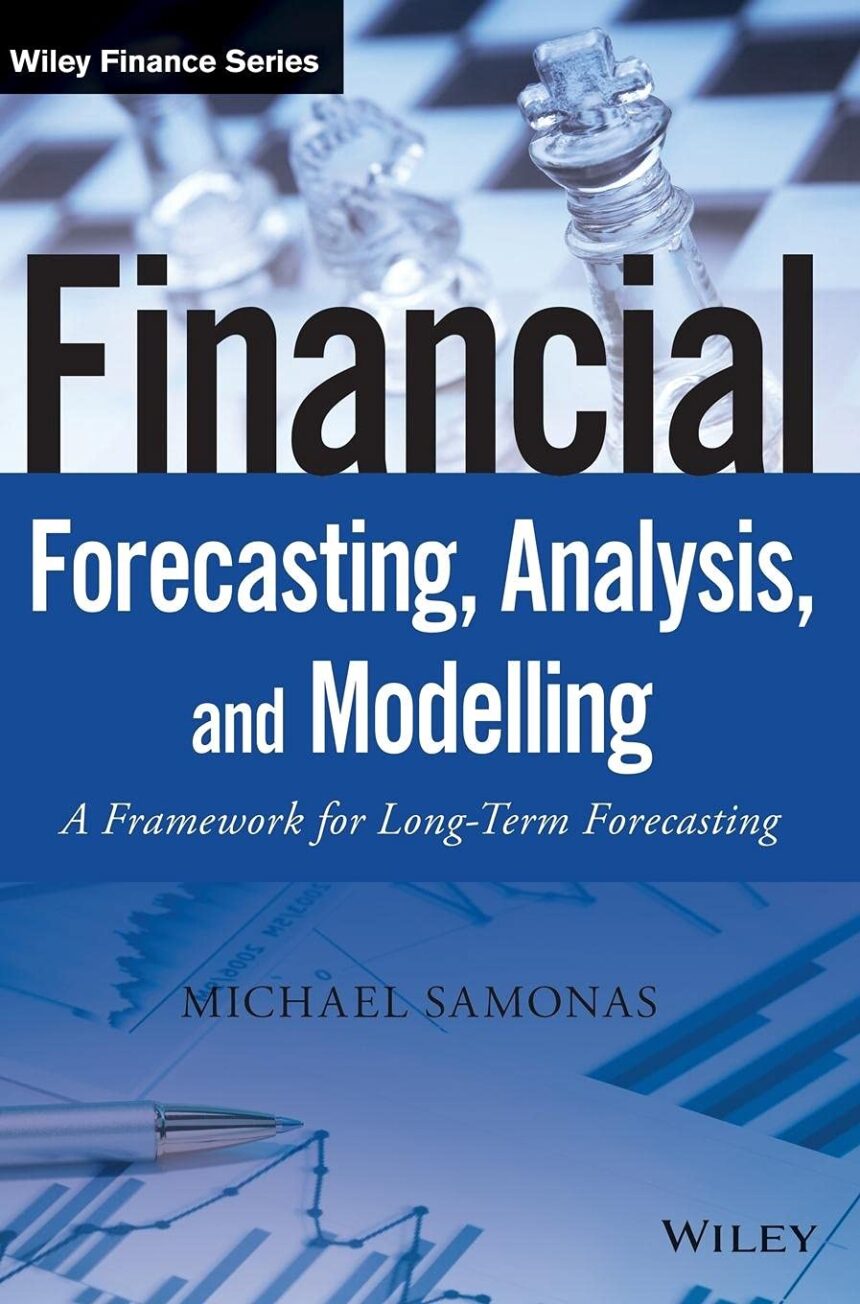
Financial Forecasting, Analysis, and Modelling: A Comprehensive Review
Abstract
Financial forecasting, analysis, and modelling are critical components of effective financial management, informing decision-making processes across various sectors. Accurate predictions of future financial performance enable businesses to strategize, allocate resources efficiently, and mitigate risks. This review article explores the methodologies and tools utilized in financial forecasting, the importance of financial analysis, the role of modelling in simulating potential scenarios, and the impact of technological advancements on these areas. We aim to provide a synthesized overview of current practices, challenges, and future trends in financial forecasting and analysis.
Introduction
In an increasingly complex global economy, organizations are continuously seeking to improve their decision-making capabilities. Financial forecasting involves estimating future financial conditions based on historical data, trends, and economic indicators. Financial analysis assesses an organization’s viability, stability, and profitability through financial statements and ratios. Meanwhile, financial modelling provides a structured way to simulate financial outcomes based on various inputs and assumptions. This review delves into each of these components to highlight their interconnectedness and significance.
Financial Forecasting
Techniques and Approaches
Financial forecasting can be categorized into two main approaches: quantitative and qualitative forecasting.
-
Quantitative Forecasting: This approach relies on numerical data and statistical methods. Techniques such as time series analysis, regression analysis, and econometric models are frequently employed to identify patterns and project future values. Time series models, for instance, leverage historical data points to predict future trends, making them particularly useful in financial forecasting.
- Qualitative Forecasting: This methodology is essential when past data is unavailable or unreliable. It incorporates expert opinions, market research, and historical analysis to generate forecasts. Techniques such as the Delphi method, market research surveys, and scenario writing are common in qualitative analysis.
Challenges in Forecasting
Despite advancements in techniques, financial forecasting faces several challenges:
- Data Quality: Accurate forecasting is reliant on high-quality, relevant data. Incomplete or erroneous data can lead to significant forecasting errors.
- Uncertainty and Volatility: Economic conditions can change rapidly, making it difficult to predict future performance accurately.
- Human Judgment: Forecasting is often subject to biases and subjective judgments, which can impact the objectivity of predictions.
Financial Analysis
Importance and Techniques
Financial analysis serves as a fundamental tool for assessing an organization’s financial health and guiding strategic decision-making. Key techniques include:
- Ratio Analysis: This method allows analysts to evaluate performance by comparing various metrics, such as liquidity ratios, profitability ratios, and debt ratios, against industry benchmarks.
- Trend Analysis: By examining historical financial statements over time, trend analysis helps identify patterns that may indicate future performance.
Challenges in Analysis
The analysis process is complex and might be hindered by several factors:
- Complex Financial Instruments: The growth and intricacy of financial products can complicate the analysis and interpretation of financial statements.
- Subjectivity: Analysts’ interpretations can vary significantly, leading to divergent conclusions even when examining the same data set.
Financial Modelling
Types of Financial Models
Financial modelling provides a framework for simulating the potential impact of various scenarios on an organization’s financial performance. Common types of financial models include:
- Discounted Cash Flow (DCF) Models: These models estimate the value of an investment based on its expected future cash flows, discounted back to their present value.
- Budgeting and Forecasting Models: These are used to predict an organization’s future financial performance based on historical data and expected future trends.
- Risk Analysis Models: Tools such as Monte Carlo simulations assess the impact of risk and uncertainty on financial outcomes.
Role of Technology in Financial Modelling
Technological advancements, such as machine learning algorithms, artificial intelligence (AI), and cloud computing, have revolutionized financial modelling. These tools allow for enhanced data processing, real-time analysis, and more sophisticated modelling techniques. As technology continues to evolve, the ability to create dynamic and responsive financial models is becoming increasingly feasible.
Future Trends
Integration of AI and Machine Learning
The integration of AI and machine learning into financial forecasting and analysis is a rapidly growing trend. These technologies can enhance predictive accuracy by identifying complex patterns in large sets of data, making them invaluable in forecasting economic conditions and financial performance.
Sustainability and Ethical Considerations
As organizations increasingly focus on sustainability and social responsibility, incorporating environmental, social, and governance (ESG) factors into financial forecasting and analysis is becoming crucial. This shift requires new models and analytical techniques that account for non-financial metrics impacting long-term performance.
Enhanced Visualization Tools
Advancements in data visualization tools are making it easier for analysts and decision-makers to interpret financial data. Improved visualization aids in communicating complex financial information clearly and effectively, leading to more informed decision-making.
Conclusion
Financial forecasting, analysis, and modelling are indispensable tools in the arsenal of financial management. With advancements in technology and the growing complexity of global markets, the importance of accurate forecasting and insightful analysis will only increase. By embracing innovative methodologies and technologies, organizations can improve their decision-making capabilities, enhance their financial performance, and ultimately achieve sustainable growth. As this field continues to evolve, ongoing research and adaptation will be crucial to navigate the challenges and opportunities that lie ahead.
References
[Here you would typically include academic journals, books, and other resources cited in the article.]
This review article provides a broad overview of key aspects of financial forecasting, analysis, and modelling. It combines theoretical and practical perspectives while addressing the current landscape and future directions in the field.
Price: ₹6,898.00
(as of Feb 17, 2025 17:48:00 UTC – Details)
Risk analysis has become critical to modern financial planning Financial Forecasting, Analysis and Modelling provides a complete framework of long-term financial forecasts in a practical and accessible way, helping finance professionals include uncertainty in their planning and budgeting process. With thorough coverage of financial statement simulation models and clear, concise implementation instruction, this book guides readers step-by-step through the entire projection plan development process. Readers learn the tools, techniques, and special considerations that increase accuracy and smooth the workflow, and develop a more robust analysis process that improves financial strategy. The companion website provides a complete operational model that can be customised to develop financial projections or a range of other key financial measures, giving readers an immediately-applicable tool to facilitate effective decision-making. In the aftermath of the recent financial crisis, the need for experienced financial modelling professionals has steadily increased as organisations rush to adjust to economic volatility and uncertainty. This book provides the deeper level of understanding needed to develop stronger financial planning, with techniques tailored to real-life situations. Develop long-term projection plans using Excel Use appropriate models to develop a more proactive strategy Apply risk and uncertainty projections more accurately Master the Excel Scenario Manager, Sensitivity Analysis, Monte Carlo Simulation, and more Risk plays a larger role in financial planning than ever before, and possible outcomes must be measured before decisions are made. Uncertainty has become a critical component in financial planning, and accuracy demands it be used appropriately. With special focus on uncertainty in modelling and planning, Financial Forecasting, Analysis and Modelling is a comprehensive guide to the mechanics of modern finance.
Publisher : Wiley; 1st edition (20 February 2015)
Language : English
Hardcover : 232 pages
ISBN-10 : 1118921089
ISBN-13 : 978-1118921081
Item Weight : 567 g
Dimensions : 17.78 x 2.29 x 24.64 cm
Country of Origin : United Kingdom










